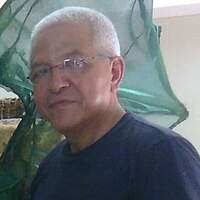Water Quality, Heavy Metals, And Antifungal Susceptibility To Fluconazole Of Yeasts From Water Systems
Fecha de creación: 04/08/2023Tipología: Productos Resultados de Actividades de Generación de Nuevo Conocimiento
- Detalles del producto
- Asociaciones
- Autores
- Objetivos de Desarrollo Sostenible
- Identificadores asignados (DOI/ISBN/ISSN)
Resumen del producto
El producto no tiene una definición para el resumen.
Abstract del producto
Aquatic environments could be reservoirs of pathogenic yeasts with acquired antifungal
resistance. The susceptibility to antifungal agents of yeasts present in the wastewater and natural
waters of the city of Cali was evaluated. Samples were taken from two types of water: drinking
water (Meléndez River, drinking water treatment plant “Puerto Mallarino” in the Cauca River) and
wastewater (South Channel of the Cauca River, “Cañaveralejo-PTAR” wastewater treatment plant).
Physico-chemical parameters, heavy metal concentration, and yeast levels were determined using
standard procedures. Yeasts were identified using API 20 C AUX (BioMérieux) and sequence analysis
of the ITS1-5.8S-ITS2 and D1/D2 regions of the large subunit of the ribosome. Susceptibility
assays against fluconazole and amphotericin B using the minimum inhibitory concentration (MIC)
test were determined using the microdilution method. The influence of physico-chemical parameters
and heavy metals was established using principal component analysis (PCA). Yeast counts
were higher at WWTP “PTAR” and lower at Melendez River, as expected. A total of 14 genera and
21 yeast species was identified, and the genus Candida was present at all locations. Susceptibility
tests showed a 32.7% resistance profile to fluconazole in the order DWTP “Puerto Mallarino =
WWTP “PTAR” > South Channel “Navarro”. There were significant differences (p < 0.05) in the
physico-chemical parameters/concentration of heavy metals and yeast levels between the aquatic
systems under study. A positive association was observed between yeast levels and total dissolved
solids, nitrate levels, and Cr at the “PTAR” WWTP; conductivity, Zn, and Cu in the South Channel;
and the presence of Pb in the “Puerto Mallarino” DWTP. Rhodotorula mucilaginosa, Candida albicans,
and Candida sp. 1 were influenced by Cr and Cd, and Diutina catelunata was influenced by Fe (p <
0.05). The water systems explored in this study showed different yeast levels and susceptibility profiles,
and, therefore, possible genetic differences among populations of the same species, and different
physico-chemical and heavy metals concentrations, which were probably modulating the antifungal-
resistant yeasts. All these aquatic systems discharge their content into the Cauca River. We
highlight the importance to further investigate if these resistant communities continue to other locations
in the second largest river of Colombia and to determine the risk posed to humans and
animals.































